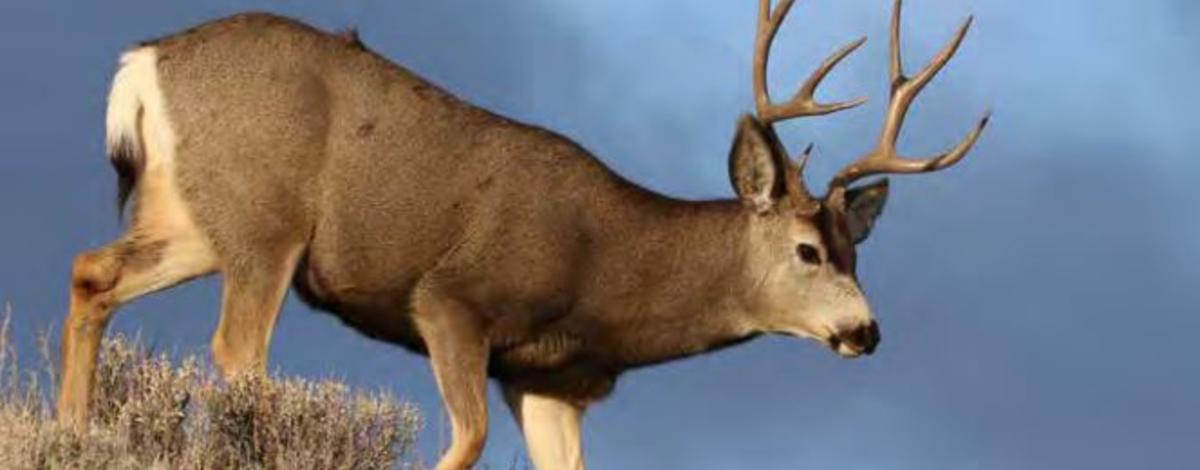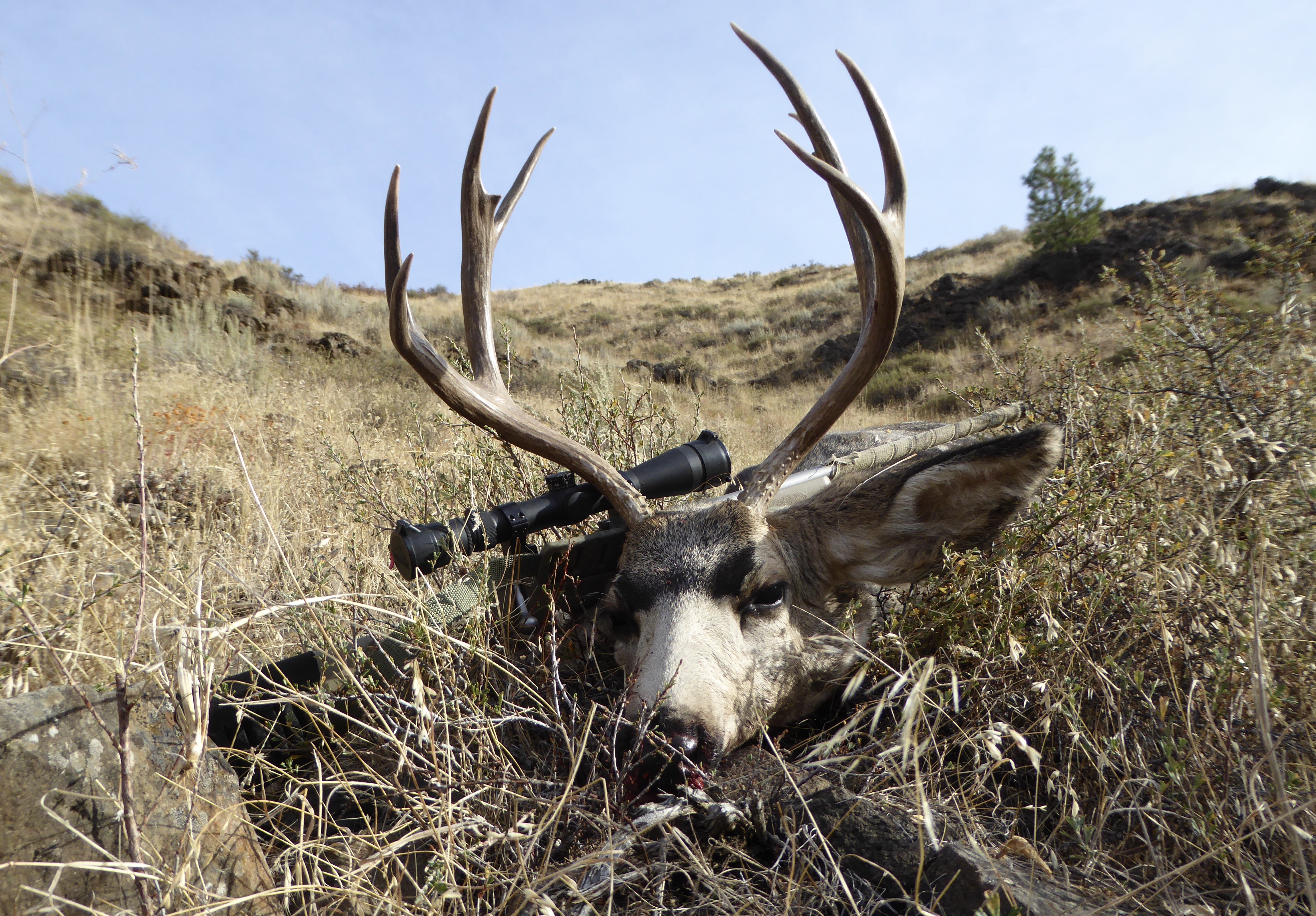It’s the beginning of a new year and the beginning of another big game season-setting process for the Idaho Department of Fish and Game. Very soon hunters will be asked to provide comments on proposals to help shape Idaho’s big game hunting opportunities for the next two years. Though this may not seem like anything new, the Southeast Region wildlife staff added something novel to its approach… and it started last spring.
In April 2024, Idaho Fish and Game’s Southeast Region announced the formation of the Southeast Idaho Mule Deer Advisory Committee. Applications were solicited from residents of southeastern Idaho, and approximately 50 sportsmen requested to participate in the committee. Fish and Game staff reviewed the applications and selected a group of twelve sportsmen who represented various communities in the region and who had diverse preferences for mule deer hunting opportunities.
Why a Mule Deer Advisory Committee? Fish and Game initiated this process for the following reasons: 1) to enhance our efforts to increase public participation and buy-in to the harvest management process; 2) to provide a unique venue where sportsmen (over several months) could share and discuss their ideas for altering harvest management strategies in the region—strategies which have been relatively unchanging in recent years; and 3) because mule deer harvest during the 2023 hunting season was one of the lowest on record in the southeastern region, aligning with Fish and Game data suggesting low survival rates during several preceding winters and a suppressed mule deer population.
The suite of challenges facing mule deer is significant, and Fish and Game staff recognize that charting a path forward requires novel approaches. While severe winters (southeast Idaho experienced 3 in a 7-year period) and subsequent mortality have recently occupied much of the conversation about mule deer management, there are many other important factors that are affecting mule deer. Increased human development continues to reduce the amount of available habitat for deer, while invasive plants, conifer encroachment, and changes to fire regimes continue to decrease habitat quality. Additionally, roadkill is a pervasive and growing problem, and disease is likely to become an increasingly influential factor to Idaho mule deer populations in the future. On top of all these external factors, hunter behaviors are changing, and the tools available to hunters for harvesting deer continue to expand annually.
What was the committee asked to do? The advisory committee was invited to develop proposals – changes to hunting seasons – that would continue to provide general season hunting opportunities in southeast Idaho, while at the same time meeting the goal of improved hunter experiences in the field.
The committee held six official meetings where they discussed mule deer ecology, management, and sportsmen preferences. Fish and Game staff provided information describing the history of mule deer management in southeastern Idaho, the basics of harvest management, and historical hunter participation and harvest (in addition to providing any data or information that the committee requested).
An important aspect of these discussions was that any proposed changes likely would not have a significant impact on overall deer numbers. Mule deer population growth in southeast Idaho is not limited by harvest, in part because there are currently no doe hunting opportunities in the region and buck-to-doe ratios remain high enough to ensure that all does are being bred. In contrast, buck numbers/quality or changes in hunter density can likely be modified with changes to harvest seasons, thereby having the potential to improve hunter experiences.
What did the committee decide? The advisory committee concluded their final meeting in early December 2024 and submitted two proposals to Fish and Game staff.
Proposal 1: Change the general season any-weapon hunts in GMUs 73A and 76 to muzzleloader only hunts (maintaining the same dates as previous seasons, Oct. 10 – 24, but resulting in no any-weapon seasons in these units). This proposed change would be initiated as an experiment, documenting hunter numbers, harvest, and sex-ratio changes that occurred with the modified weapons restrictions.
It is likely the proposed change to the general season would meet the goal of increasing the number and quality of bucks in these two units by decreasing the proportion of hunters who harvest. Fish and Game is currently investigating the effects of different season structures on buck vulnerability and the changes proposed by the working group could be integrated into that project to better understand the effects of a change like this.
Potential effects to general-season deer hunters and hunter satisfaction are harder to predict. Repeated surveys have strongly indicated that Idahoans want to have the opportunity to hunt mule deer every year. However, they have also suggested that increased potential to harvest a mature buck is desirable. Thus, Fish and Game is invested in meeting the desires of our hunting public to hunt deer every year and have good experiences. Reasons for concern about the proposal include the inability to utilize centerfire rifles on these hunts (some hunters don’t own muzzleloaders or prefer to use a weapon with a greater range), the potential for hunters who don’t want to participate in a muzzleloader-only season to be displaced to other units, and some hunters that traditionally hunt these units who may stop deer hunting altogether.
Fish and Game staff have some idea of what would likely happen if this rule change occurred. Harvest rates would likely decrease and buck:doe ratios would likely increase. However, these outcomes are not certain, and more importantly Fish and Game doesn’t know what the public response to these changes might be. Will participation in units with modified general seasons plummet? Will hunters return to these units as the buck:doe ratio increases? While we expect the public to have reservations about changes to hunt structures on the front end, do these concerns disappear as the buck hunting experience in these units improves?
Understanding how hunters respond and if reduced success rates are a tradeoff hunters are willing to make for a different hunting experience (and to maintain the opportunity to hunt every year) could be important for management decisions down the road.
Proposal 2: Provide additional opportunities to hunt in controlled hunt areas by adding a 50-tag muzzleloader hunt in GMU 78 and a 100-tag muzzleloader hunt in GMU 70 between the archery and any weapon hunts (Oct. 1 – 9). Also, convert the unlimited controlled archery season in unit 70 back to a general season. The any-weapon controlled hunt in GMU 78 would simultaneously be reduced by 25 tags and the any-weapon controlled hunt in GMU 70 would be reduced by 50 tags.
This recommendation replaces a portion of the existing rifle hunters with a higher number of muzzleloader hunters. Total buck harvest should remain similar to current levels in these two units, but the change would allow more hunters to participate in these desirable areas.
What’s next? Fish and Game staff will present the committee’s proposals to the Idaho Fish and Game Commission at its January meeting. If the Commission gives the go-ahead, the proposals will then be included as part of the big game season-setting package to be presented to the public in February. Results from that public input process will be presented to the Commission for consideration in March when they set 2025/2026 big game seasons.
Several public meetings will be held to present and discuss season setting proposals with sportsmen. These meeting schedules and associated comment periods will be posted on Fish and Game’s website and social media channels once they have been set.
Questions about the Southeast Idaho Mule Deer Advisory Committee and the resulting proposals can be directed to the Southeast Region Fish and Game office at 208-232-4703 or emailed to Regional Wildlife Manager Zach Lockyer at zach.lockyer@idfg.idaho.gov. Alternatively, Fish and Game staff can put interested sportsmen in contact with members of the committee (Southeast Idaho Mule Deer Advisory Committee | Idaho Fish and Game).


